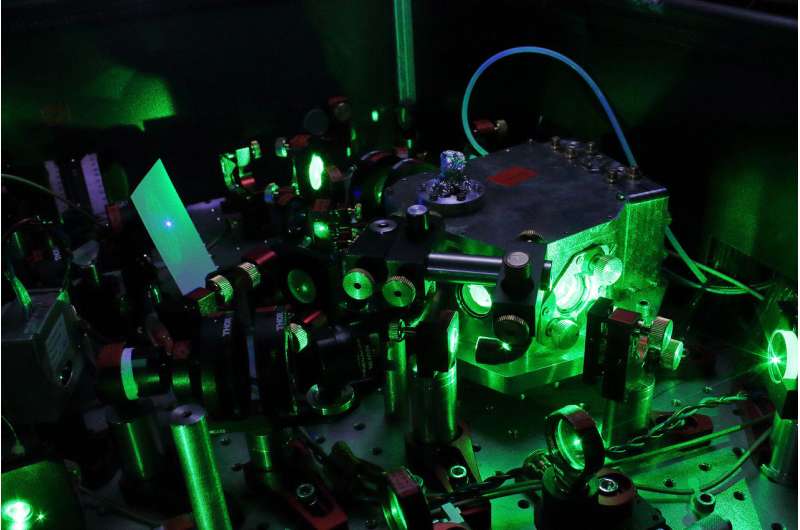Researchers develop transportable optical atomic clock

Atomic clocks are no longer based on a microwave transition in cesium, instead operating with other atoms that are excited using optical frequencies. Some of these new clocks are portable. At its QUEST Institute, PTB is currently developing a transportable optical aluminum clock in order to measure physical phenomena outside a laboratory. A prerequisite for this is that the required lasers are able to endure transportation to other locations. PTB physicists have therefore developed a frequency-doubling unit that will continue to operate when it has been shaken at three times the Earth's gravitational acceleration. The results have been published in the current issue of the Review of Scientific Instruments.
It was Einstein who determined that two clocks located at two different positions in the gravitational field of the Earth operate at different speeds. What initially sounds bizarre has quite practical effects: Two optical atomic clocks with an extremely small relative measurement uncertainty of 10-18 can measure the difference in height between arbitrary points on the Earth at an accuracy of just one centimeter. This so-called chronometric levelling represents an important application of clocks in geodesy. One of the prerequisites for this is that the optical frequencies of the two clocks can be compared.
PTB is currently developing several types of atomic clock that can each be transported in a trailer or in a container. Their operation outside a protected laboratory, however, involves many challenges: The ambient temperature, for example, is much less stable. Furthermore, significant shocks may occur during transportation. This is why optical structures that have worked perfectly well in the laboratory may initially be unusable at the destination. They must painstakingly be readjusted—which leads to a loss of valuable research time.
This problem concerns the transportable aluminum clock being developed at the QUEST Institute. This clock requires two UV lasers at 267 nm. For this wavelength, researchers developed a long-wave infrared laser that can be frequency-doubled twice in succession. During this process, the light is coupled into a closed ring of four mirrors so that a high optical power is circulating within the ring. A non-linear crystal placed in this ring transforms the circulating light into light of half the wavelength.
Due to the dichroic coating of the mirror, the circulating light passes out of the resonator and is then used for reading the clock. The QUEST Institute has developed a design for this so-called frequency-doubling cavity, which is based on a monolithic, highly stable frame onto which all mirrors and the crystal are mounted. This sealed,setup is gas-tight to the outside in order to protect the crystal, which is highly sensitive even to the slightest contamination.
The developers of the cavity were able to demonstrate on a prototype that it also doubles the laser light while it is exposed to accelerations of 1 g. Furthermore, they demonstrated that the frequency doubling efficiency is not impaired after being subjected to accelerations of up to 3 g for 30 minutes. This corresponds to five times the value stated in Standard ISO 13355:2016 about road transportation on trucks. The cavity is, however, not only mechanically robust, but it is just as efficient as comparable systems that have been developed by research groups of other institutes. Moreover, 130 hours of uninterrupted continuous operation was demonstrated.
In view of these properties, the QUEST Institute has made several of these doubling cavities for different wavelengths (not only for UV) which became integral components of various quantum-optical experiments, with the aim of providing these experiments reliably with laser light. Moreover, a German optomechanics company has licensed the design in order to use it as a basis for a commercial product.
More information: S. Hannig et al, A highly stable monolithic enhancement cavity for second harmonic generation in the ultraviolet, Review of Scientific Instruments (2018). DOI: 10.1063/1.5005515
Journal information: Review of Scientific Instruments
Provided by Physikalisch-Technische Bundesanstalt




















